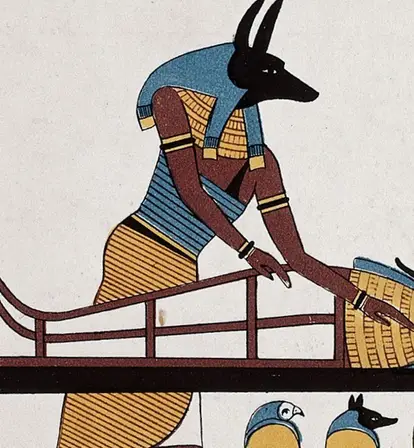With the head of a jackal and the body of a human, Anubis was the deity of death and mummification in ancient Egypt who accompanied kings in the afterlife.
The symbol of Anubis — a black canine or a muscular man with the head of a black jackal — the ancient Egyptian god of the dead was said to oversee every aspect of the process of dying. He facilitated mummification, protected the graves of the dead, and decided whether or not one’s soul should be granted eternal life.
Strange that a civilization known to worship cats should come to personify death as a dog.
The Origins Of Anubis, The Egyptian Dog God
Historians believe the idea of Anubis developed during Ancient Egypt’s Predynastic Period of 6000-3150 BC as the first image of him appears on tomb walls during Egypt’s First Dynasty, the first group of pharaohs to rule over a unified Egypt.
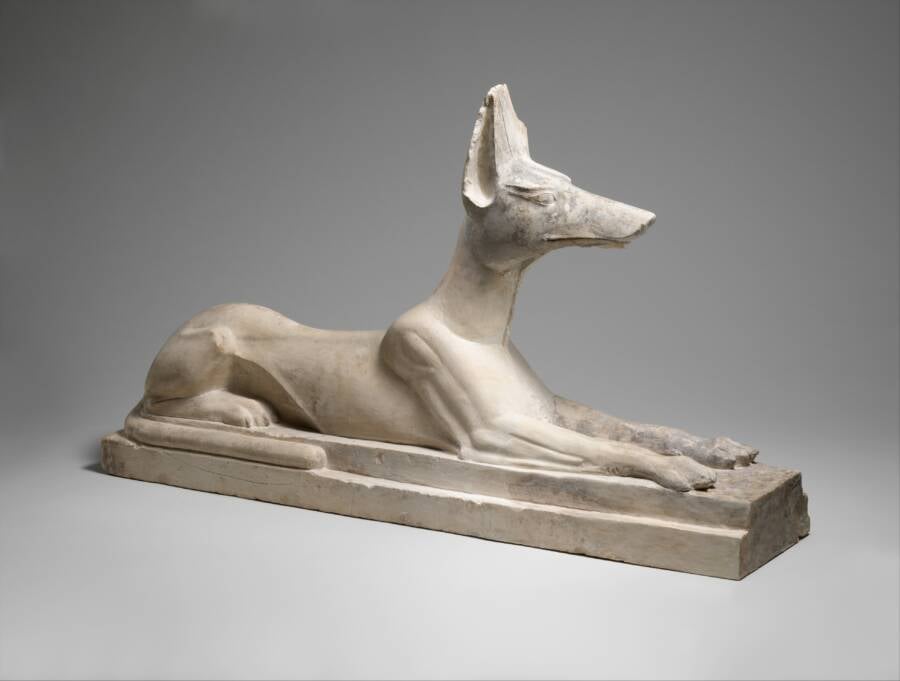
Metropolitan Museum of ArtA statue of Anubis in his jackal animal form.
Interestingly, the god’s name “Anubis” is actually Greek. In the ancient Egyptian language, he was called “Anpu” or “Inpu” which is closely related to the words for “a royal child,” and “to decay.” Anubis was also known as “Imy-ut” which loosely means “He Who is in the Place of Embalming” and “nub-tA-djser” which means “lord of the sacred land.”
Together, the etymology of his name alone suggests that Anubis was of divine royalty and involved with the dead.
Anubis’ image was also likely borne as an interpretation of stray dogs and jackals that had the tendency to dig up and scavenge freshly buried corpses. These animals were thus tied to the concept of death. He’s also often confused with the earlier jackal god Wepwawet.
The god’s head is often black in reference to the ancient Egyptian association of the color with decay or the Nile’s soil. As such, a symbol of Anubis includes the color black and those objects associated with the dead like mummy gauze.
As you’ll read, Anubis takes on many roles in the process of dying and being dead. Sometimes he assists people into the afterworld, sometimes he decides their fate once there, and sometimes he simply protects a corpse.
As such, Anubis is seen collectively as the god of the dead, the god of embalming, and the god of lost souls.
The Myths And Symbols Of Anubis
But another god relating to the dead rose to prominence during Egypt’s Fifth Dynasty in the 25th century BC: Osiris. Because of this, Anubis lost his status as the king of the dead and his origin story was rewritten to subordinate him to the green-skinned Osiris.
In the new myth, Osiris was married to his beautiful sister Isis. Isis had a twin sister named Nephthys, who was married to their other brother Set, the god of war, chaos, and storms.
Nephthys supposedly disliked her husband, instead preferring the powerful and mighty Osiris. According to the story, she disguised herself as Isis and seduced him.
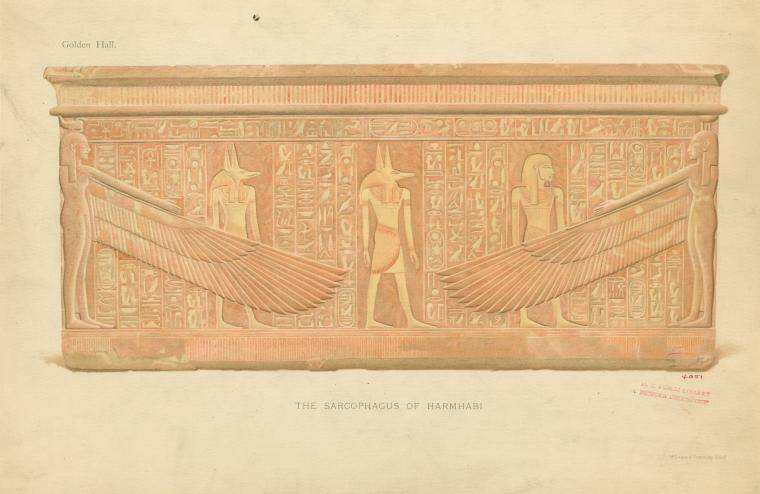
Lancelot Crane / The New York Public LibrariesThe Egyptian god of death on the sarcophagus of Harmhabi.
Although Nephthys was considered to be infertile, this affair somehow resulted in a pregnancy. Nephthys gave birth to the baby Anubis but, afraid of the wrath of her husband, quickly abandoned him.
When Isis found out about the affair and the innocent child, however, she sought Anubis out and adopted him.
Unfortunately, Set also found out about the affair and in vengeance, killed and dismembered Osiris, then flung the pieces of his body into the Nile River.
Anubis, Isis, and Nephthys searched for these body parts, ultimately finding all but one. Isis reconstructed her husband’s body, and Anubis set about preserving it.
By doing so, he created the famous Egyptian process of mummification and was from then on considered the patron god of embalmers.
As the myth continues, however, Set was furious to learn that Osiris had been put back together. He tried to transform the god’s new body into a leopard, but Anubis protected his father and branded Set’s skin with a hot iron rod. According to legend, this is how the leopard got its spots.
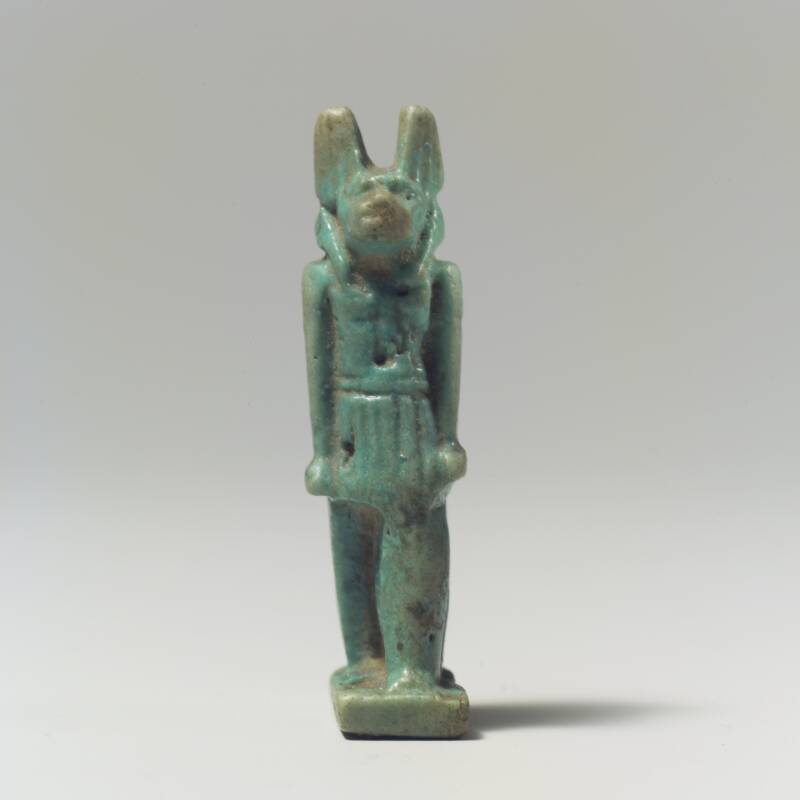
Metropolitan Museum of ArtA funerary amulet of Anubis.
After this defeat, Anubis skinned Set and wore his skin as a warning against any evil-doers who tried to desecrate the sacred tombs of the dead.
According to Egyptologist Geraldine Pinch, “The jackal god decreed that leopard skins should be worn by priests in memory of his victory over Seth.”
Upon seeing all of this, Ra, the Egyptian god of the sun, resurrected Osiris. However, given the circumstances, Osiris could no longer rule as the god of life. Instead, he took over as the Egyptian god of death, replacing his son, Anubis.
The Protector Of The Dead
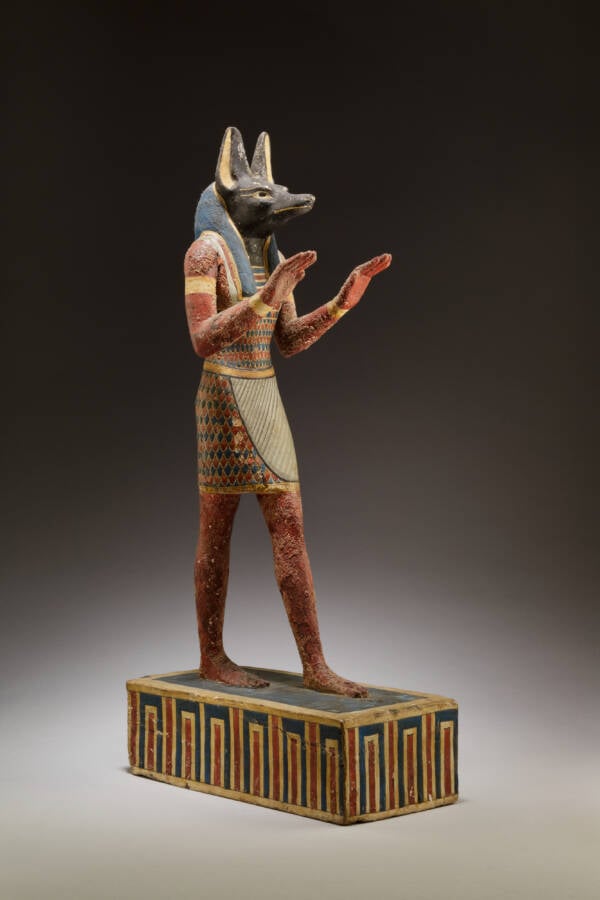
Metropolitan Museum of ArtA statue portraying the Egyptian god Anubis with a jackal’s head and man’s body.
Although Osiris took over as Ancient Egypt’s king of the dead, Anubis continued to maintain an important role in the dead. Most notably, Anubis came to be seen as the god of mummification, the process of preserving the bodies of the dead for which Ancient Egypt is famous.
Anubis wears a sash around his neck that represents the protection of goddesses and suggests that the god himself had some protective powers. Egyptians believed a jackal was perfect for keeping away scavenging canines from buried bodies.
As part of this role, Anubis was responsible for punishing people who committed one of the worst crimes in Ancient Egypt: robbing graves.
Meanwhile, if a person was good and respected the dead, it was believed that Anubis would protect them and provide them with a peaceful and happy afterlife.

Wikimedia CommonsEgyptian statue depicting a worshiper kneeling before Anubis.
The jackal diety was also gifted with magical powers. As Pinch says, “Anubis was the guardian of all kinds of magical secrets.”
He was considered an enforcer of curses — perhaps the very same ones that haunted the archeologists who unearthed Ancient Egyptian tombs like Tutankhamun’s — and was allegedly backed by battalions of messenger demons.
The Weighing Of The Heart Ceremony
One of Anubis’ most important roles was presiding over the weighing of the heart ceremony: the process which decided the fate of a person’s soul in the afterlife. It was believed that this process took place after the deceased’s body underwent purification and mummification.
The person’s soul would first enter what was called the Hall of Judgement. Here they would recite the Negative Confession, in which they declared their innocence from 42 sins, and purged themselves of evildoing in the face of the gods Osiris, Ma’at, goddess of truth and justice, Thoth, the god of writing and wisdom, 42 judges, and, of course, Anubis, the Egyptian jackal god of death and dying.

Metropolitan Museum of ArtAnubis weighing a heart against a feather, as depicted on the walls of Nakhtamun’s tomb.
In Ancient Egypt, it was believed that the heart was where a person’s emotions, intellect, will, and morality were contained. In order for a soul to cross into the afterlife, the heart must be judged as pure and good.
Using golden scales, Anubis weighed a person’s heart against the white feather of truth. If the heart was lighter than the feather, the person would be ferried to the Field of Reeds, a place of eternal life that closely resembled life on earth.
One tomb from 1400 BCE explains this life: “May I walk every day unceasing on the banks of my water, may my soul rest on the branches of the trees which I have planted, may I refresh myself in the shadow of my sycamore.”
However, if the heart was heavier than the feather, signifying a sinful person, it would be devoured by Ammit, the goddess of retribution, and the person would be subjected to various punishments.
The weighing of the heart ceremony has frequently been portrayed on the walls of tombs, but it’s most clearly laid out in the ancient Book of the Dead.
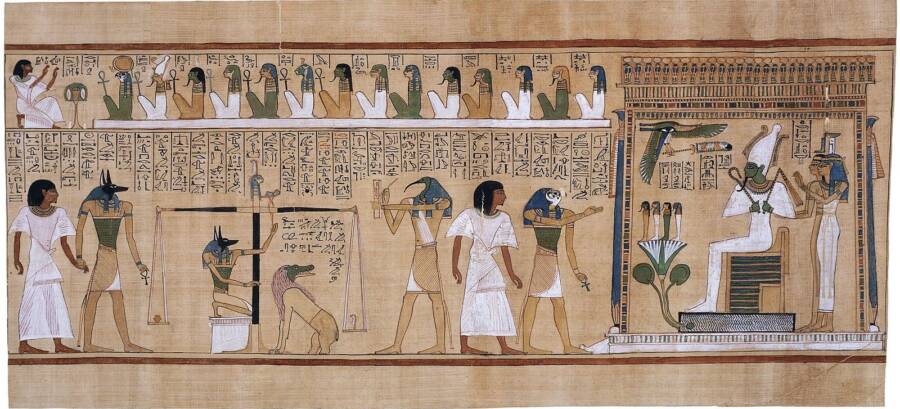
Wikimedia CommonsA copy of the Book of the Dead on papyrus. Anubis is shown next to the golden scales.
In particular, Chapter 30 of this book gives the following passage:
“Oh my heart which I had from my mother! O heart of my different ages! Do not stand up as a witness against me, do not be opposed to me in the tribunal, do not be hostile to me in the presence of the Keeper of the Balance.”
The Dog Catacombs
So important was Anubis’ role to a mortal soul in achieving eternal life that shrines to the Egyptian death god were scattered all across the country. However, unlike those of the other gods and goddesses, most of Anubis’ temples appear in the form of tombs and cemeteries.
Not all of these tombs and cemeteries contained human remains. In the First Dynasty of Ancient Egypt, it was believed that sacred animals were the manifestations of the gods that they represented.
As such, there is a collection of so-called Dog Catacombs, or underground tunnel systems filled with nearly eight million mummified dogs and other canines, such as jackals and foxes, to honor the jackal god of death.
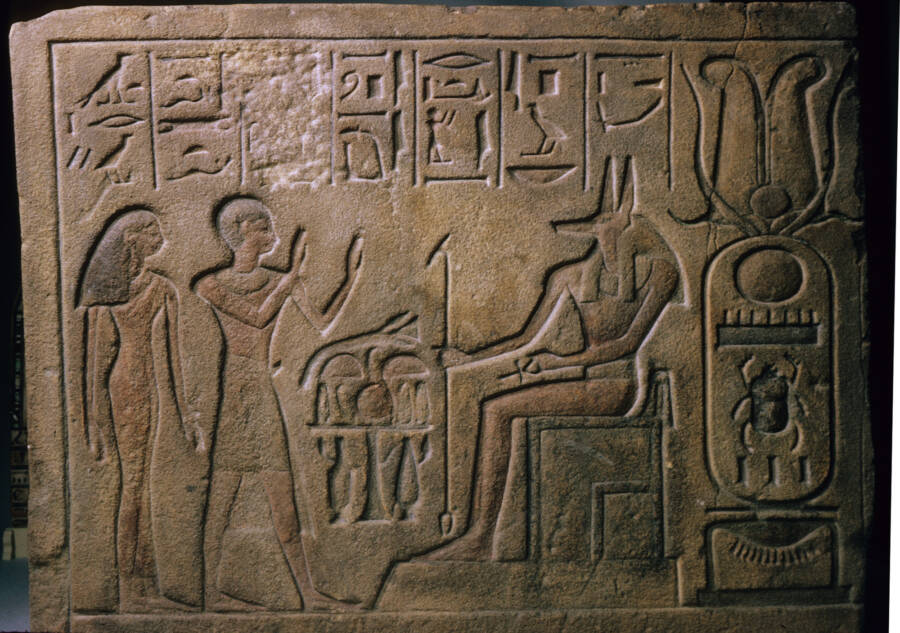
Metropolitan Museum of ArtA tablet that shows the worship of the jackal god.
Many of the canines in these catacombs are puppies, most likely killed within hours of their birth. The older dogs that were present were given more elaborate preparations, often mummified and placed in wooden coffins, and they were most likely donations by wealthier Egyptians.
These dogs were offered to Anubis in the hopes that he would lend their donors favors in the afterlife.
Evidence also suggests that these dog catacombs were an important part of the Egyptian economy in Saqqara where it was found, with merchants selling statues of the deity and animal breeders raising dogs to be mummified in Anubis’ honor.
An Anubis Fetish?
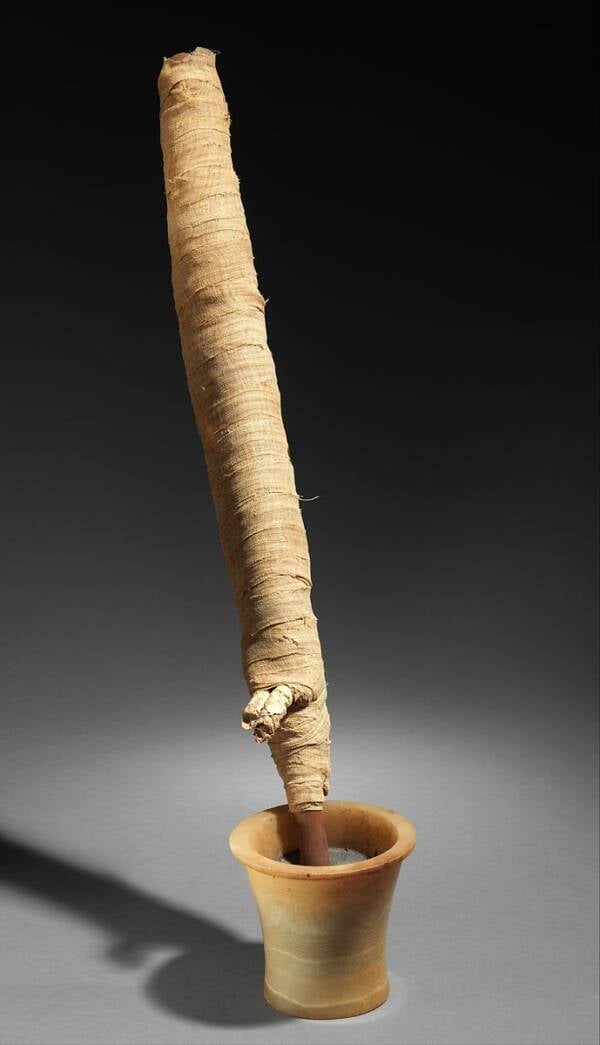
Metropolitan Museum of ArtIt’s not certain what these Imiut fetishes, sometimes called Anubis fetishes, were for, but they crop up usually where one finds an offering to the Egyptian dog god and they’re generally believed to be a symbol of Anubis.
While we know quite a lot about Anubis, some things remain mysterious to this very day. For example, historians are still stumped as to the purpose of the Imiut fetish: a symbol associated with Anubis. The “fetish” here isn’t exactly what you think.
The fetish was an object, formed by tying a headless, stuffed animal skin to a pole by its tail, then fastening a lotus flower to the end. These objects were found in the tombs of various pharaohs and queens, including that of the young King Tutankhamun.
Because the objects are found in tombs or cemeteries, they are often called Anubis Fetishes and are believed to be some kind of offering to the god of the dead.
However, one thing’s for certain: Anubis, the god of death, played a central role in easing the Ancient Egyptians’ natural anxiety and fascination with the afterlife.
Now that you know more about the Egyptian god of death, Anubis, read about the discovery of this ancient tomb filled with cat mummies. Then, check out this ancient ramp that may explain how the Egyptians built the Great Pyramids.
